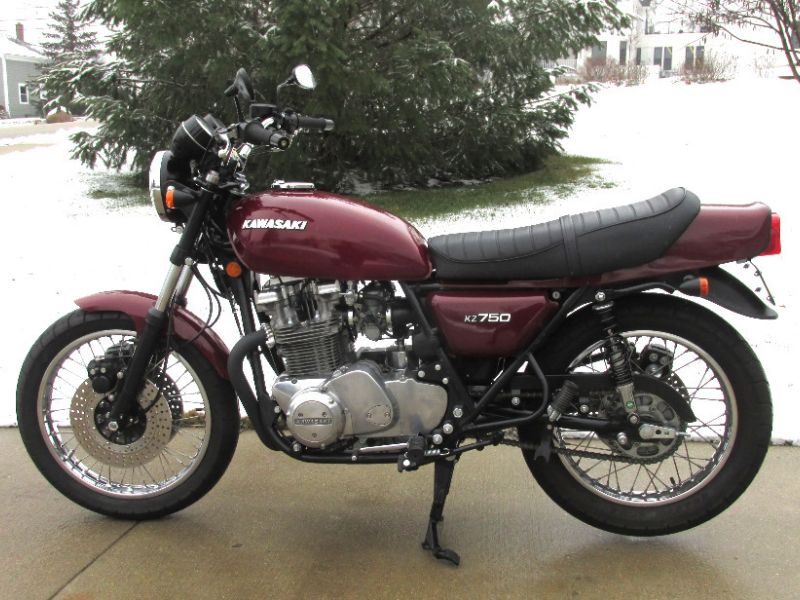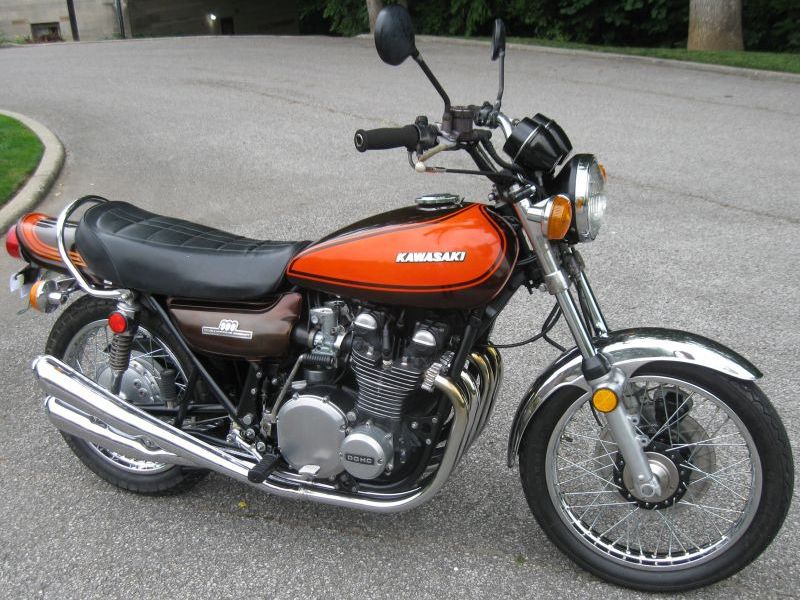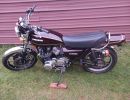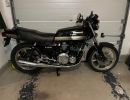Here's a very lengthy story about a tankslapper, basically a weave gone bad. Glad I have never had to experience it!
Ashen and trembling I maneuvered my California Superbike School Kawasaki 636 off the track and into the hot pits, pulling up next to course control and a few of the other coaches. They took one look at me, my white face and shaky hands and asked “what happened?” “Tank-slapper,” I replied sullenly and they all laughed, “welcome to the club!”
I was at Reno Fernley Raceway, coaching with the California Superbike School when I experienced the scariest moment of my riding history that didn’t end up in a crash. I was working with a very fast student, an unassuming guy that I never thought was going to be as fast as he was, but he was blazing, and getting faster and faster each session which meant I had to work!
The layout at Reno Fernley raceway (it has since been added to and modified) was fun and fast with a smooth front section that flowed really nicely. The back section however, was extremely bumpy in a kind of wavy and rippled way, and all morning I had been a little nervous and tentative going through it. It happened later on in the afternoon, I was sitting parked off of the track near the front straightaway when my fast guy student screamed past. I pulled onto the track quickly and raced after him, closing the gap considerably in the first few turns. When he pulled onto the back straight however, he was still about 10 bike lengths ahead of me and I needed to close the gap further if I was going to observe him ride. As coaches we usually follow our students for a lap or two and then get in front and lead them for a lap or two. I twisted the throttle harder to close in and everything was going along fine until I hit one of the bumps so hard it bounced me right out of the seat.
When I came down the bike jerked and bounced and the bars started to shake from side to side, tossing me back and forth with it. I thought I was going down and for an instant, out of sheer panic I clung to the bars and tried to make it stop. Big mistake, the bars started shaking more violently, I was bounced higher and harder in the seat and as much as I tried to hold on to the handlebars I couldn’t. They were literally ripped right from my hands and started slapping into the tank going from lock to lock.
I prepared to eject. I was quite literally about to jump off the bike when an amazing thing happened, the bike started calming down and straightening itself up.
I was so excited, and eager to regain control of my machine that I grabbed at the bars again and the instant I clamped down on them they started shaking wildly again.
This time I smartened up to what was happening and implemented some of the very basic things that I teach every day at the California Superbike School about rider input. Basically, as Keith Code says in his book Twist of the Wrist II, “riders create more problems than motorcycles are designed to handle.”
What he means by that is that the more you interfere with what the bike is trying to do on its own, by holding on too tight, by trying to muscle the bike around, by squirming and wiggling and messing about, the more difficult it is to have a stable bike.
Yes, all these thoughts did zoom through my head as I was flailing around on my bike like a stunned chicken, leaving foot long skid marks trailing behind me.
I squeezed the tank with my knees, raised my butt a little bit off the seat to help soak up bumps with my legs (like a jockey riding a horse) loosened my grip, made my arms like wet noodles and tried to relax while rolling on the throttle. After another series of wild jerks the bike calmed down and I had regained control. Whew.
Then oddly enough I remembered some random comment that a racer had once said to me that at the time had made no sense at all. “If you ever have a tank slapper, remember to pump up the brakes afterwards because it can cause them to not work at all.”
I reached for the brakes as I approached the left hand corner at a high rate of speed and low and behold, no brakes! I pumped wildly, got the bike slowed down enough to make the turn, looked up the track to see my speedy student disappearing in the distance, rode straight for pit exit, and into an awaiting group of shark like coaches who thought my whole experience was funny. Funny?
So what exactly is a tank slapper anyway?
Let’s break it down.
A tank slapper is a rapid, high intensity and unwanted motion of the handlebars back and forth. Literally it is the slapping of the bars from side to side that can get violent enough to actually hit the tank of the motorcycle, hence the name “tankslapper.” The bad news is that they are scary as hell and can cause some pretty nasty crashes. The good news is that there are some very effective techniques you can use to handle them.
What causes tank slappers?
The suspension system on a motorcycle is designed to make the ride more comfortable for the rider and primarily to keep the tires in good contact with the road surface which can include bumps, cracks, pot holes and all manner of imperfections. This system must work while the motorcycle is straight up and down and also during turning when the bike is leaned over, sometimes at very extreme lean angles.
In his book, A Twist of the Wrist II, Keith Code explains, “the process of head shake (which can be the beginnings of a tank slapper) begins when the tire hits a ripple and, along with the suspension, compresses. This throws the wheel slightly off-center. When the suspension and tire release, the wheel is light and flicks back toward a centered position, but again, slightly off-center. Still off-center when it loads again from the next ripple; again it is flicked past its centered position. The cycle of flicking back and forth repeats as the front-end seeks to stabilize through this automatic and necessary self- correcting process. Any bike will do it, and what most riders fail to realize is that this shake is a necessary part of the bike’s suspension system.”
The little wiggle in the front of the bike is how the motorcycle self corrects and gets itself back on track. Ever see a motorcycle race where something, either a tank slapper or a big slide causes the rider to either be ejected from, or fall off the bike? As soon as the rider is no longer on the bike it wiggles a bit, straightens out, keeps on going perfectly straight until it runs out of momentum and falls over. This is a classic example of how a bike, if left to its own devices will sort itself out. Code mentions that, “based on the amount of wiggling, squirming and overuse of controls most riders exhibit, the bike would, if it could, surely ask them to leave. Riders create instability on their own mounts.”
Head shake can be caused by hitting a bump or a ripple in the pavement or it can occur when accelerating hard out of a corner. Hard acceleration can cause the front end to get light or even wheelie which means that the tire is no longer following the road very well, and when it touches back down it can skip or bounce or be off-center, starting off the headshake. Code explains that, “the good news is that if your bike is basically tight (steering head bearings not excessively worn, forks and shock not sticking etc.) the head-shake stays up front and does not transfer to the rest of the bike.”
Eventually, the oscillation will die out on its own, unless we interfere.
How Riders make the situation worse:
Our normal reactions when the handlebars start to slightly shake are to stiffen up on the bars. Keith Code calls this our “survival reactions,” noting that we do not usually choose to get stiff and tight on the bars, our bodies just do it. When we stiffen up the head shake is transferred through our bodies to the whole bike and that is when the shaking can get more violent. Code says that “too tight on the bars is the most common source of motorcycle handling problems.”
How to Prevent a Tank Slapper:
Knowing that gripping the bars too tight is what transfers head shake through the bike and makes it feel like a ferocious tiger ripping a piece of meat into shreds, we can work to prevent a tank slapper from ever occurring by maintaining a relaxed position on the bike at all times. Practice sitting on your bike with your knees gripping the tank for more stability. Sit back a little further in your seat so that your arms have a nice bend in them with your elbows pointed to the ground and then flap em like you’re doing the funky chicken. That’s relaxed, and from that position you can easily use your legs to lift your weight off the seat a little bit, like a jockey on a horse, so that your butt is not banging down hard on the seat. Think light as a feather, one with the bike, Zen and the art of motorcycle riding……
Installing a steering damper is another way to help prevent tank slappers. A steering damper works to limit the travel and intensity of any head shake that the bike is experiencing by damping or soaking up the excess energy. They are necessary on some of the more modern bikes that have aggressive frame geometry, relatively short wheelbases and powerful engines. Dampers are mounted up front so that there is insufficient leverage to transfer shake through the bike. Keep in mind though that a motorcycle with a damper will still shake if you are tight on the bars, so relax!
What to do if you experience a tank slapper:
If you do find yourself in the unfortunate situation of experiencing a tank slapper first hand don’t try to muscle the bike or force it to stop as it will only make it worse. Try to relax your grip on the bars, pinch the tank with your knees and lift your butt off the seat a little bit. Also, don’t chop the throttle as that will put more weight onto the front and potentially make the situation worse. Ideally you want to continue to accelerate if possible to get the weight further to the back of the bike, or at least maintain a steady and smooth throttle.
Popping a wheelie would eliminate a tank slapper immediately because there would no longer be a front wheel bouncing back and forth in an effort to straighten itself out, but I don’t know too many people that could pull off a stunt like that in the middle of a panic situation.
If all else fails, let go. The bike will try to fix itself.
Another important thing to remember is that occasionally very violent tank slappers can force the front brake pads and brake pistons away from the rotors, causing the brakes to go soft or even to fade completely. So, once you regain control of the motorcycle, check your front brakes and if they feel soft then pump the lever a few times until the pressure returns.
Finding yourself in a situation where the motorcycle you are on is suddenly out of control is no doubt a scary predicament. The more knowledge you are able to arm yourself with, the better equipped you are to handle emergency situations, and the more you are able to practice certain techniques (such as being nice and relaxed on the bike at all times) the more likely you will be to actually do it when it is absolutely necessary. It’s a pretty cool feeling to be able to consciously decide to do something that makes a bad situation better.
Ride Safe,
Misti Hurst
www.mistihurst.com
 Slayer61's GPZ1100 BOTM August '24
Slayer61's GPZ1100 BOTM August '24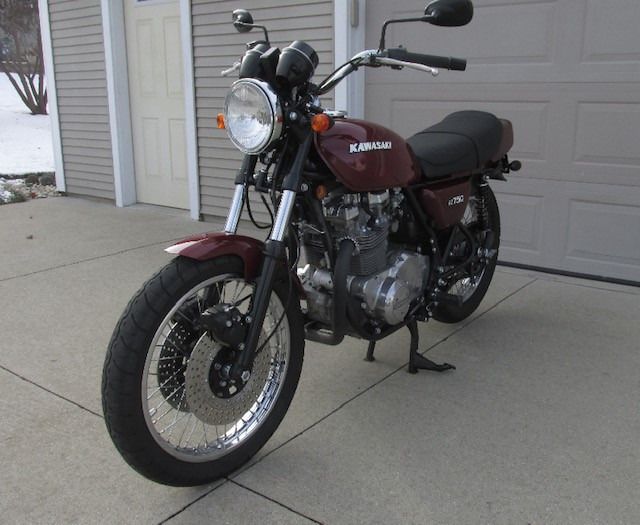 Feb '24 BOTM KZ750 by RustyB1
Feb '24 BOTM KZ750 by RustyB1







